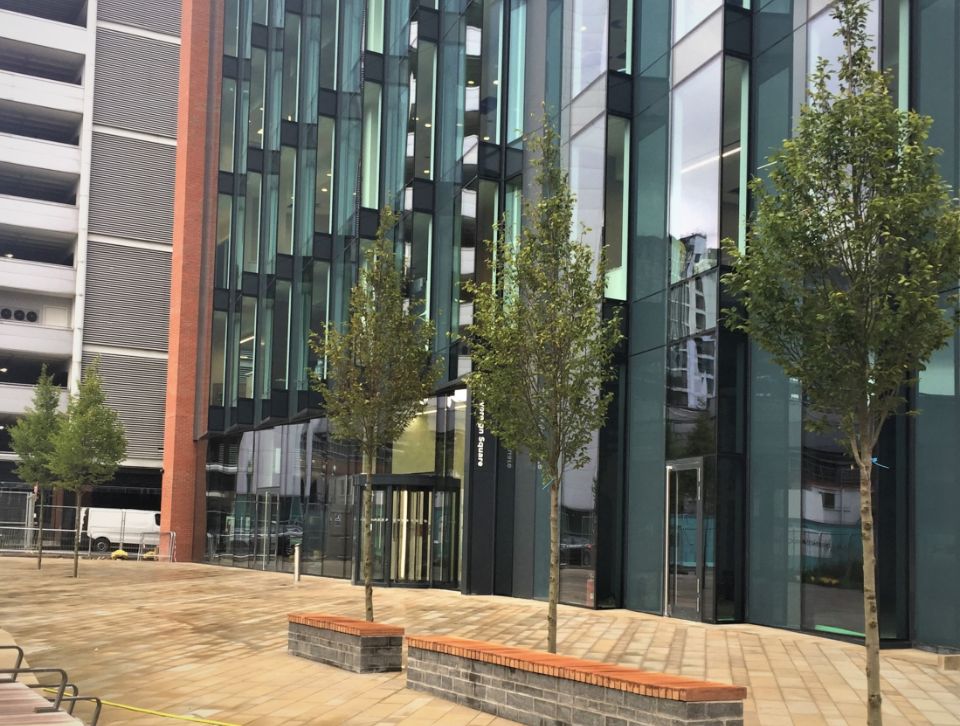The Buckland area in Lymington, Hampshire is the site of impressive natural beauty, nestled between the seaside and partly covered by trees planted since the 18th century. When the Buckland House, a property located near the city centre, came under new management in 2012, the building and its adjacent car park underwent a significant redesign that managed to have minimum impact on the historic site. An area that previously functioned as a footpath would be paved in order to extend the car park, and this design called for the removal of large street trees from the public right of way. In light of the removal of these trees from the public realm, the New Forest District Council mandated that at least three new trees be planted on the site to replace them. But it would not be enough to simply replace these mature trees in number, seeing as the Council also has a best management practice in place for trees that requires them to be planted in generous soil volumes to help them become large functional trees that will benefit the local community.
In light of the Council’s guidance on soil volume requirements, Sherlock Boswell Architecture selected Silva Cells to provide the trees access to large volumes of un-compacted soil. The design goals were primarily to provide soil volume but after consulting with DeepRoot the ability to use the trees to manage stormwater became an obvious benefit in adding water handling capacity to the site in a manner that increased functional capacity over time. The designers elected to optimize the cells and the ample soil volume they contained by also using them to manage the stormwater on the site, including run off from the roof.

A 55 square meter area of the roof (25% of the roof surface area) was designed to collect and direct rain water runoff via drain pipes into two gully pots (catch basins) at the perimeter of the building where it is then dispersed throughout the Silva Cells, which were positioned one meter away from the road edge alongside the car park at Eastern Street between Eastern Avenue and Southampton Road. An additional section of cells were also installed beneath two additional trees that were planted in a strip of land near the corner of the building. Stormwater enters into the Silva Cell system through the lawn surface and permeable surface of the car park. In total, 198 Silva Cell frames and 99 Silva Cell decks were installed in a two layer system alongside the car park, bringing each tree 18.7 cubic meters (660 cubic feet) of soil.
The Silva Cells also function to relieve and backup the overflow mechanisms in place for the other watercapturing methods on the site. Adjacent to the car park is a soak-way (a trench filled with stone), that captures run off on its way to an attenuation tank below the car park. The Silva Cells are located at a higher point than the soak-way, and capture water that passes through, thus slowing down the flow. If the attenuation tank reaches capacity, it overflows into a gravel bed placed between the Silva Cells and the attenuation tank. In the event that this gravel bed becomes saturated, the water may enter the Silva Cells via the aggregate layer under the porous pavement. Should the Silva Cell system reach capacity, the water can overflow into the gravel layer that is below the depth of Silva Cells.
Altogether, the site is designed to handle a 100 year and 30% storm without any water leaving the site. Through the innovative method of collecting stormwater from the roof and utilizing the large soil volumes in the Silva Cells to serve as backup to other water capture methods on the sites, the trees are not only given superb growing conditions, but will put these conditions to work to keep the site sustainable for decades to come.
Installation Summary
Average soil volume per tree: 18.7 m3
Number of Trees: 4
Tree species: Tilia x euchlora
Total Silva Cells: 198 Frames, 99 decks
Installation Date: October 2012
Installation type: Integrated – Trees and Stormwater
Project Site: Car Park, Streetscape
Project Designer: Sherlock Boswell Architecture
Contractors: Colten Dvelopments Limited
